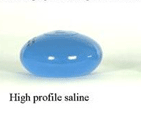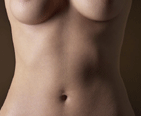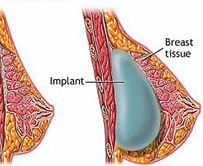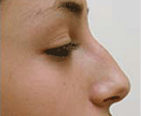The eye’s correction method, which could be used in cornea surgery, was developed by two ophthalmologists- Pollikaris (Greece) and Burrato (Italy), in the middle of 80’s. They used excimer laser, whose ultraviolet light cut the cornea tissue by breaking the molecular bonds within the cells. This allows removal of tissue with great accuracy and with minimal damage to surrounding tissue.
Laser eye surgery
 Eye laser surgery is the exact and controlled removal of the eye corneal tissue by a special laser to reshape the cornea for changing it’s focusing power. It’s natural for people to have some doubts before making a desicion to prepare for such operation , in this case for laser eye procedure , of possible side effects after the operation. The matter of fact such cases are really rare if the operation is performed by the doctor who is a specialist in this field. Many people have selected the laser eye surgery to improve their vision.
Eye laser surgery is the exact and controlled removal of the eye corneal tissue by a special laser to reshape the cornea for changing it’s focusing power. It’s natural for people to have some doubts before making a desicion to prepare for such operation , in this case for laser eye procedure , of possible side effects after the operation. The matter of fact such cases are really rare if the operation is performed by the doctor who is a specialist in this field. Many people have selected the laser eye surgery to improve their vision.
Well, it’s good to know that procedure takes at least 20 minutes! First, the surgeon instills an anesthetic drops in your eyes. Then he installs a retractor to keep your eyes open and lifts a thin layer of the cornea with the help of microkeratome. After that, the surgeon guides the laser down the cornea and burns away the cells to correct your eyesight. Finally, the surgeon cleans the eye and puts the layer of cornea back in place. That’s it! Be ready to repeat this treatment with other eye and in a few days come back to work!
Am I a good candidate for laser eye surgery?
People who made a desicion to do an laser eye operation, ask themselves are they a good candidates to proceed the value of eye laser procedure. You are a good candidate if:
-
you are at least 18 year old;
-
your vision is stable for at least one year;
-
you should have healthy regina, cornea and eye pressure;
-
you don’t have any major eye deseases;
-
you shouldn’t be expecting a baby;
-
you must be willing to accepts the potiential risk and side effects, the cornea must be thick enough.
Besides an eye examination with your ophthalmologist without any question will ensure your candidacy. Usually you won’t be considered candidates if: you have uncontrolled diabetes, you are pregnant, you have active eye infection or deseases of cornea also heavily dry eyes.
 Within several days, the gauze dressings, if patient have them, will be removed, and person may be given a surgical bra. It should be worn as directed by surgeon. A burning sensation in nipples may be experienced for about two weeks, but this will subside as bruising fades. Stitches will come out in a week to 10 days, but the swelling in breasts may take three to five weeks to disappear. The patient should be able to return to work within a few days, depending on the level of activity required for the job. Surgeon’s advices should be followed on when to begin exercises and normal activities. Breasts will probably be sensitive to direct stimulation for two to three weeks, so much physical contact should be avoided. Scars will be firm and pink for at least six weeks. Then they may remain the same size for several months, or even appear to widen. After several months, scars will begin to fade, although they will never disappear completely. Generally, post-operative instructions will include a lot of rest and limited movement in order to help speed up the breast augmentation recovery time.
Within several days, the gauze dressings, if patient have them, will be removed, and person may be given a surgical bra. It should be worn as directed by surgeon. A burning sensation in nipples may be experienced for about two weeks, but this will subside as bruising fades. Stitches will come out in a week to 10 days, but the swelling in breasts may take three to five weeks to disappear. The patient should be able to return to work within a few days, depending on the level of activity required for the job. Surgeon’s advices should be followed on when to begin exercises and normal activities. Breasts will probably be sensitive to direct stimulation for two to three weeks, so much physical contact should be avoided. Scars will be firm and pink for at least six weeks. Then they may remain the same size for several months, or even appear to widen. After several months, scars will begin to fade, although they will never disappear completely. Generally, post-operative instructions will include a lot of rest and limited movement in order to help speed up the breast augmentation recovery time. These
These  The most important aspect of
The most important aspect of  Today, breast augmentation cosmetic procedures have less risk of complication than ever. Breast augmentation is performed on an outpatient basis using a general or local anesthesia. The
Today, breast augmentation cosmetic procedures have less risk of complication than ever. Breast augmentation is performed on an outpatient basis using a general or local anesthesia. The  (email is not clickable due spam please type it manually in your email program)
(email is not clickable due spam please type it manually in your email program) It’s usually recommended that activities which could result an injury should be avoided for six weeks. Be patient – clear
It’s usually recommended that activities which could result an injury should be avoided for six weeks. Be patient – clear